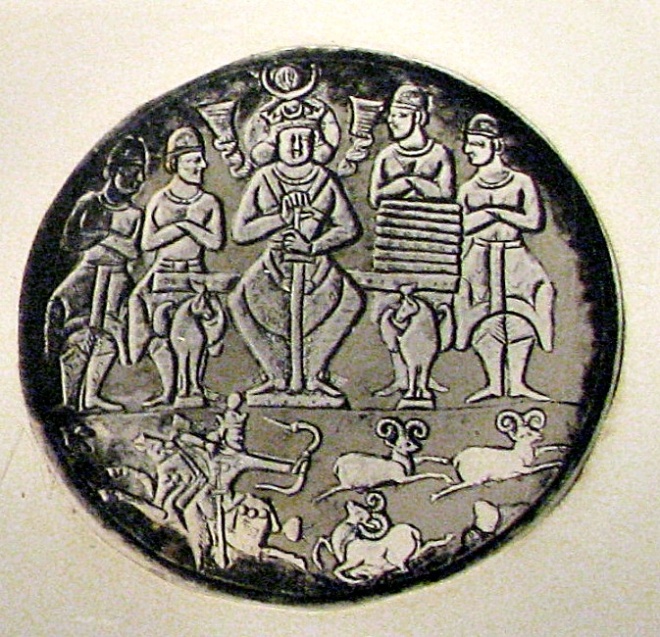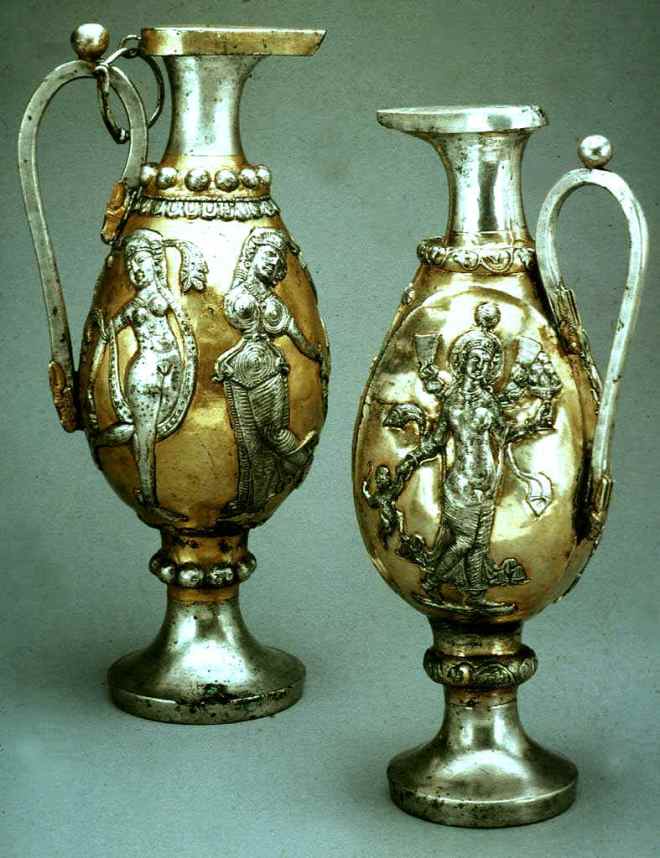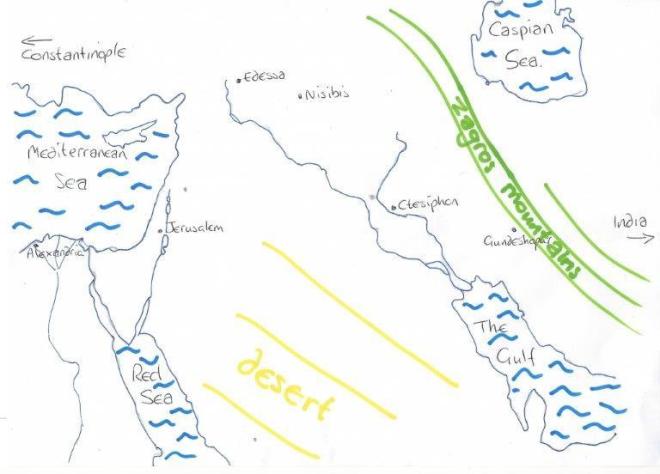In generation 427 of this story, around 520 to 530 of our era, there was an influential teacher called Mazdak. He lived in the Sasanian Empire. He was a vegetarian and a pacifist. He has also been decribed as a communist, because he advocated the sharing of women and property. He inspired an uprising known as ‘Mazdak’s revolt’. He and many of his followers were put to death on the orders of the shahinshah Khosrow I sometime after his accession in the year 531.
Even that bare outline is open to dispute, but that is the best I can make of his story from reading the sources available.
We need some context here. His name is not too different from that of the supreme deity of Zoroastrianism: Ohramazd or Ahura Mazda. It is recorded that he was a Zoroastrian priest. Zoroastrianism, ‘the good religion’, is the earliest monotheistic organised religion that I know of.
Some of its characteristics –
* There is order and there is chaos. Order is to be welcomed and chaos to be avoided. Chaos comes with the lie and order comes with truthfulness.
* Cleanliness (order) is greatly valued and pollution (chaos) is abhorred. This leads to a concern for nature, that the water, the earth and the fire should not be contaminated. When a person dies the body becomes part of the corruption. To bury it in the earth would pollute the earth, so some Zoroastrians expose the body to be eaten by scavenging birds.
* The good religion encourages ‘good thoughts, good words, good deeds’. This implies a responsibility on each person to abide by those values.
* Zoroastrianism is the religion of the good life. The Wise Lord, Ohramazd, has provided all that we need. To abstain from this would be ungrateful. Zoroastrians do not abstain from sex or eating for religious reasons. They enjoy the fruits of the Earth.
* The historical record is quite clear that incest was the norm, at least for the aristocracy and family of the shahinshah. As incest is a taboo in the Roman world, that doesn’t get mentioned very much.
The vegetarianism and pacifism make sense in the context of Zoroastrianism. To take another life would be to diminish the order coming from Ohramazd and introduce pollution. Life is good; therefore to take it before its time is bad. However, most Zoroastrians didn’t see it that way.

Coin showing shahinshah Khosrow I, who ordered Mazdak and his followers to be killed. For him the good life clearly didn’t include vegetarianism or pacifism.
But if we are to understand Mazdak’s views on women and property, then it is a good idea to look at the practice of next-of-kin marriage, also known as incest.
Families tend to have their in-jokes and sometimes their own language codes. Can you imagine what it would be like to be part of a family that had practised next-of-kin marriage for generation after generation? After a few generations, someone from outside the family would turn up almost as a member of a different species.
Incest had also been practised among the ancient Egyptians. Cleopatra married her brother and had a child with him before she met Marc Anthony. I suspect the motives in the time we are looking at were about purity (an important Zoroastrian concept) – in this case, purity of a bloodline. However, it also concentrated wealth into a few hands and did not lead to social cohesion.
There is another clue that all was not well in regards to property. The aristocratic families were exempt from tax, consolidating their wealth still further. Khosrow’s father and predecessor, Kavad I, instituted tax reforms. Khosrow continued them. Clearly the situation had reached a tipping point. As we know from our time, an uneven distribution of wealth is a source of dissatisfaction.
And so maybe Mazdak’s advocacy of sharing women and property was an attempt to lance a boil that threatened to erupt over the Zoroastrian world. However, the priestly establishment was horrified. “If people have women and property in common, how can they know their children and establish their genealogies?” the priests are reported to have asked him.
But those priests were already out of date. Khosrow probably took the hint from the unrest stirred up by Mazdak’s revolt. As well as the tax reforms which eliminated the tax exemption on the wealthy families, he introduced a new class between the nobility and the peasants. This group, the deghans, were similar to the landowning gentry in England. Their members were employed within the imperial administration, in which they were renowned for their loyalty and honesty. And so the previously concentrated power was spread a little more widely through society.
Then in the following century the arab armies, inspired by the new religion of Islam, swept away the Sasanian Empire and with it most of the structures of Zoroastrianism. Nowadays the adherents of Zoroastrianism worldwide are numbered in thousands, far fewer than in the Sasanian Empire in the time of Mazdak.
However, Mazdak’s ideas persisted. The most famous of his successors were al-Muqanna and Babak Khorramdin, both of whom lived in Iran three to four hundred years after his death. They both inspired armed resistance against the muslims. He also had an antecedent, Zardusht, who lived two centuries before him and is known as the first communist.
References
Patricia Crone: Kavad’s Heresy and Mazdak’s revolt, Journal of Persian Studies
Mansour Shaki: The Cosmogonical and Cosmological Teachings of Mazdak, Iranica Online














